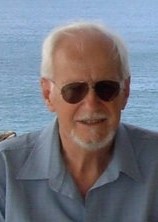-
(b.) - ?1937
Bio/Description
A British-born Canadian computer programmer, he is the inventor of flow-based programming (FBP) which defines applications using the metaphor of a "data factory". It views an application not as a single, sequential process, which starts at a point in time, and then does one thing at a time until it is finished, but as a network of asynchronous processes communicating by means of streams of structured data chunks, called "information packets" (IPs). In this view, the focus is on the application data and the transformations applied to it to produce the desired outputs. The network is defined externally to the processes, as a list of connections which is interpreted by a piece of software, usually called the "scheduler". The processes communicate by means of fixed-capacity connections. A connection is attached to a process by means of a port, which has a name agreed upon between the process code and the network definition. More than one process can execute the same piece of code. At any point in time, a given IP can only be "owned" by a single process, or be in transit between two processes. Ports may either be simple, or array-type, as used e.g. for the input port of the Collate component described below. It is the combination of ports with asynchronous processes that allows many long-running primitive functions of data processing, such as Sort, Merge, Summarize, etc., to be supported in the form of software black boxes. He is the son of the writer, translator and editor, John Rodker and Barbara McKenzie-Smith, an artist. Born John Paul Rodker, his name was changed by deed poll after his parents divorced, and his mother married Edward A. Morrison III, an American citizen. He was educated at The Dragon School, Eton College (he was a King's Scholar, specializing in Classics), and King's College, Cambridge where he gained an M.A. in Anthropology and Archaeology, specializing in social anthropology. He joined IBM UK in January 1959, as an EDPM (Electronic Data Processing Machines) Representative. Five years later, he moved to the US, and then to Montr?al, Qu?bec, Canada. While in Montr?al, he started developing the ideas which led eventually to flow-based programming, whose concepts are now (roughly 40 years later) being picked up by major companies and computing practitioners world-wide. An early implementation of this technology has been in continuous production use at a major Canadian bank since that time. He retired from IBM Canada in 1992, and still works as a contractor and consultant, promoting the concepts of FBP, and currently lives in historic Unionville, Ontario. He is the author of the book Flow-Based Programming: A New Approach to Application Development, now in its 2nd edition.
-
Date of Birth:
1937 -
Noted For:
Inventor of flow-based programming (FBP) -
Category of Achievement:
-
More Info:


